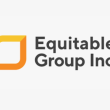by Liz Ann Sonders, Chief Investment Strategist, Charles Schwab & Company Ltd.
The concentration of gains up the cap spectrum isn't itself a precursor to weakness; it's the lack of participation from the "average stock" that warrants some caution.
To add more color to the debate, the chart below shows the maximum percentage declines for all S&P 500 bear markets since the 1960s. If the bear market did indeed end back in October, it would have lasted for 195 trading days, which is about average when considering the entire sample size. If the bear market is still ongoing (meaning, the October low is to be broken through), this bear is getting longer in the tooth, now being more than a year old.
That length isn't unprecedented, however. Sticking with the possibility that the bear market isn't yet over puts it in the company of bears that started in 2007 and 1968 (and beyond that, 1973, 1980, and 2000). The worst-case scenario would be something akin to the bear that started in 2000, which was clearly the most frustrating drawdown (in terms of timing, not magnitude) in the collection below.
How low can you go

Source: Charles Schwab, Bloomberg, as of 5/26/2023.
Data indexed to 0% at the start of each bear market. Indexes are unmanaged, do not incur management fees, costs and expenses and cannot be invested in directly. Past performance is no guarantee of future results.
"The market" vs. the market
As shown below, there is quite a wide performance gap between the 50 largest names in the S&P 500, the overall S&P 500, and the Russell 2000. Looking at the two extremes, over the past 60 trading days, the 50 largest names are up by 11.7%, while the Russell 2000 is down by 6.7%. It's an important distinction to make, especially given the excitement over the so-called resilient nature of "the market" this year. If "the market" is a handful of mega-cap names, then performance looks great; if it's the rest of the crew, the story looks different.
Mega caps rolling higher

Source: Charles Schwab, Bloomberg, as of 5/26/2023.
Indexes are unmanaged, do not incur management fees, costs and expenses and cannot be invested in directly. Past performance is no guarantee of future results.
Shown below, narrowing the scope further, the five largest names in the S&P 500 have decisively outperformed their peers (the other 495) this year (most notably in March and May). We're not of the thought that the mega-cap outperformance in and of itself is a precursor to imminent market doom, but at some point, the lack of participation from the rest of the market should be noted as a likely sign of coming deterioration.
Generals vs. soldiers

Source: Charles Schwab, Bloomberg, as of 5/26/2023.
"Top 5" represent five largest stocks in the index by market capitalization in any given month. "Other 495" represent the rest of the index not included in the top five. Indexes are unmanaged, do not incur management fees, costs and expenses and cannot be invested in directly. Past performance is no guarantee of future results.
A weak start
One way of seeing that is via the performance of small caps (proxied by the Russell 2000). As shown in the table below, going back to the inception of the Russell 2000, small caps have always tended to do well when the market was this far beyond a major market low (decline of 20% or more), given they're closely tied to the economy. The current gain since October clearly stands out in a not-so-good way.
Small caps' weak start

Source: Charles Schwab, Bloomberg, Strategas Research Partners LLC, as of 5/26/2023.
156 days represents duration of current 10/12/2022 S&P 500 low date. Indexes are unmanaged, do not incur management fees, costs and expenses and cannot be invested in directly. Past performance is no guarantee of future results.
No bounce in the banks

Source: Charles Schwab, Bloomberg, Strategas Research Partners LLC, as of 5/26/2023.
Fama-French data used for bank returns prior to 2002. KBW Bank Index used for bank returns after 2002. 156 days represents duration of current 10/12/2022 S&P 500 low date. Indexes are unmanaged, do not incur management fees, costs and expenses and cannot be invested in directly. Past performance is no guarantee of future results.
(No) breadth of fresh air

Source: Charles Schwab, Bloomberg, as of 5/26/2023.
156 days represents duration of current 10/12/2022 S&P 500 low date. Indexes are unmanaged, do not incur management fees, costs and expenses and cannot be invested in directly. Past performance is no guarantee of future results.
No peak performance

Source: Charles Schwab, Bloomberg, as of 5/26/2023.
Indexes are unmanaged, do not incur management fees, costs and expenses and cannot be invested in directly. Past performance is no guarantee of future results.
In sum
The concentration into the mega caps kicked into high gear at the beginning of the current banking crisis in early March, with the added kicker of enthusiasm around artificial intelligence (AI). Our advice is to be wary of concentration risk in your own portfolios and use periodic rebalancing to keep individual positions and market segments from ballooning in relative size. Mean reversion is inevitable at some point, although trying to pinpoint the timing can be an exercise in futility.














